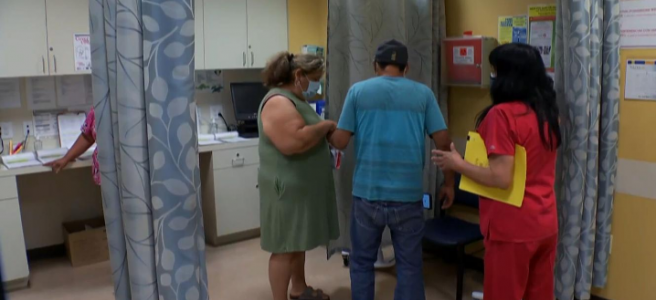We can make drugs more affordable for New Mexicans
- Aug 14, 2021
It is tough to go even a week without seeing another report about pharmaceutical industry profiteering, and it’s time for New Mexicans to fight back. In the latest outrage, the New York Times reports the drug manufacturer Biogen will charge $56,000 a year for its new Alzheimer’s drug, Aduhelm.
Drug prices have little to do with the cost of research and development and the need to deliver affordable treatment to patients, and much more to do with company revenue targets and profits. Biogen’s stock soared nearly 40 percent on news of the $56,000 price tag. Prescription drug companies are the only businesses in the health care industry whose rates are not regulated. It’s time to hold them to the same standard as all other health care providers.
New Mexico needs a prescription drug affordability board to help ensure we all have access to affordable medications, because drugs don’t work if people can’t afford them, and our health care system cannot sustain the continued upward pressure of rising drug costs. By creating such a board, the state Legislature and Gov. Michelle Lujan Grisham can empower an independent body with the authority to evaluate high-cost drugs and set reasonable rates for consumers.
Other states are already acting to take on the pharmaceutical industry’s anti-consumer practices. The Colorado Legislature just passed a prescription drug board that will consider a broad range of economic factors when setting appropriate payment rates for reviewed drugs, requiring pharmaceutical manufacturers to justify drug costs. Once a fair rate is determined, the board sets an upper payment limit that applies to all purchasers and payer reimbursements in the state, ensuring lower costs benefit consumers.
The bill sets various conditions that would trigger an affordability review, including when prices increase by more than 10 percent per year, or exceed either $30,000 a year for brand-name drugs or $100 a month for generics per person. Patients or consumer advocates also could nominate drugs for review.
New Mexicans continue to struggle to afford the prescription drugs they need, often having to choose between their medication and other necessities, like rent and groceries. Meanwhile, the drug companies that produce these drugs make billions of dollars a year in profits.
The Journal of the American Medical Association reports 35 big drug companies raked in $8.6 billion in profits between 2000 and 2018. Nine of the top 10 companies spend more money on marketing and advertising than they do on researching new drugs. There is no excuse for the high prices they charge.
A new statewide coalition of health experts, patient advocates and consumers — New Mexico Consumers for Affordable Prescriptions — is urging our lawmakers to create a prescription drug affordability board and end the prescription drug price gouging that hurts our families and neighbors. Organizations ranging from AARP, the Center on Law and Poverty, Health Action New Mexico, to New Mexico Voices for Children and the New Mexico Conference of Churches, have come together to demand action in the 2022 legislative session.
On average, Americans pay four times as much for the same medicines as people in other countries. As prescription drug companies continue to increase prices, it’s time to stand up to those who are harming vulnerable New Mexicans. We need controls to make drugs more affordable for people. New Mexico needs a prescription drug affordability board.
Kurt Rager is director of Lutheran Advocacy Ministry, New Mexico, and Erik Lujan is board president of Health Action New Mexico.



